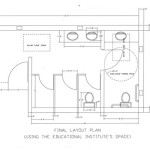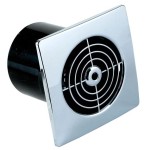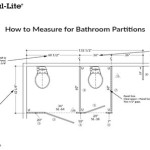Best Bathroom Hand Towel Holders: A Comprehensive Guide
Maintaining organization and aesthetics in a bathroom often hinges on selecting the right accessories. Among these, the hand towel holder plays a crucial role in both functionality and visual appeal. The market offers a diverse range of hand towel holders, each with unique features, materials, and installation methods. This article provides a comprehensive guide to choosing the best bathroom hand towel holder, focusing on key considerations such as style, material, mounting options, and space constraints.
Understanding Different Styles of Hand Towel Holders
The style of a hand towel holder considerably impacts the overall ambiance of a bathroom. Several distinct styles cater to varying aesthetic preferences, including traditional, modern, minimalist, and rustic designs. Traditional hand towel holders often feature ornate details, such as intricate carvings and antique finishes. These holders complement bathrooms with a classic or vintage design. Modern hand towel holders, conversely, prioritize clean lines, geometric shapes, and sleek finishes like chrome or brushed nickel. They align well with contemporary bathroom designs, providing a minimalist and sophisticated touch.
Minimalist hand towel holders further emphasize simplicity, often utilizing a single bar or hook. These are suitable for small bathrooms or spaces where clutter should be minimized. Rustic hand towel holders incorporate natural materials like wood, wrought iron, or distressed metal, lending a warm and inviting feel to the bathroom. The choice of style should complement the existing fixtures and decor in the bathroom to create a cohesive and visually appealing space.
Beyond these broad categories, variations exist within each style. For example, within the modern style, one could find holders with rounded edges versus sharp, angular designs. In the rustic style, the type of wood and its finish can drastically alter the holder's appearance. Understanding these nuances is crucial for selecting a hand towel holder that perfectly matches the desired bathroom aesthetic.
Material Considerations: Durability and Aesthetics
The material of a hand towel holder determines its durability, resistance to moisture, and overall aesthetic appeal. Common materials include stainless steel, brass, chrome, nickel, wood, and plastic. Stainless steel is a popular choice due to its resistance to rust and corrosion, making it well-suited for the humid environment of a bathroom. It also offers a clean and modern look that blends well with various bathroom styles. Brass, often coated with other finishes like chrome or nickel, provides excellent durability and a touch of elegance. Chrome-plated brass offers a highly reflective finish, while nickel-plated brass provides a warmer, more subdued appearance.
Wooden hand towel holders add a natural and rustic element to the bathroom. However, wood requires proper sealing and maintenance to prevent moisture damage and warping. Hardwoods like teak or cedar are more resistant to moisture than softwoods. Plastic hand towel holders are generally the most affordable option, but they may not be as durable or visually appealing as other materials. High-quality plastics, however, can be resistant to scratches and discoloration.
When selecting a material, consider the level of humidity in the bathroom and the amount of wear and tear the holder will endure. For high-traffic bathrooms, durable materials like stainless steel or brass are recommended. For guest bathrooms or powder rooms, where usage is less frequent, aesthetically pleasing materials like wood or decorative metals may be suitable choices.
Mounting Options: Wall-Mounted, Freestanding, and Over-the-Door
The mounting option of a hand towel holder significantly impacts its placement and installation process. Common mounting options include wall-mounted, freestanding, and over-the-door models. Wall-mounted hand towel holders offer a secure and space-saving solution. They are typically installed using screws and anchors, providing a stable and permanent fixture. Wall-mounted holders are ideal for bathrooms with limited counter space or where a clean, minimalist look is desired.
Freestanding hand towel holders offer flexibility and portability. They can be easily moved around the bathroom as needed, making them suitable for renters or individuals who prefer not to drill holes in the walls. Freestanding holders come in various designs, including single-arm, multi-arm, and ladder-style models. Over-the-door hand towel holders provide a convenient and temporary solution for bathrooms with limited wall space. They simply hang over the door, requiring no installation. However, they may not be as stable or durable as wall-mounted or freestanding models.
The choice of mounting option depends on the available space, the desired level of permanence, and personal preference. Wall-mounted holders require careful planning and installation, but they offer a secure and aesthetically pleasing solution. Freestanding holders offer flexibility and ease of use, while over-the-door holders provide a quick and temporary option.
Space Considerations and Size Selection
The size and dimensions of a hand towel holder should be carefully considered in relation to the available space in the bathroom. In small bathrooms, compact hand towel holders that do not take up excessive space are ideal. Wall-mounted holders with a single bar or hook can be a good choice in these situations. Corner-mounted hand towel holders can also be effective in maximizing space utilization.
In larger bathrooms, more substantial hand towel holders, such as freestanding models with multiple arms or ladder-style holders, can be accommodated. These holders provide ample space for multiple towels and can serve as a stylish focal point in the bathroom. The length of the towel bar or the number of hooks should be adequate to accommodate the number of towels that will be used regularly. A towel bar that is too short may cause towels to bunch up, while a bar that is too long may appear disproportionate.
When selecting a hand towel holder, consider the proximity to the sink and other bathroom fixtures. The holder should be positioned within easy reach of the sink to facilitate convenient hand drying. It should also be placed away from areas where it could obstruct movement or pose a safety hazard. Careful planning of the placement and size of the hand towel holder can contribute to a more functional and aesthetically pleasing bathroom.
Finishes and Color Coordination
The finish and color of a hand towel holder should complement the existing fixtures and decor in the bathroom. Common finishes include chrome, brushed nickel, oil-rubbed bronze, matte black, and gold. Chrome offers a bright and reflective finish that pairs well with modern and contemporary bathrooms. Brushed nickel provides a softer, warmer finish that is less prone to fingerprints and water spots. Oil-rubbed bronze adds a touch of rustic charm to the bathroom, while matte black offers a bold and modern look.
Gold finishes can add a touch of luxury and elegance to the bathroom, but they should be used sparingly to avoid overwhelming the space. The color of the hand towel holder should also be considered in relation to the color of the walls, tiles, and other accessories in the bathroom. A hand towel holder that contrasts with the surrounding colors can create a bold statement, while a holder that blends in with the colors can create a more cohesive look.
When selecting a finish, consider the overall lighting in the bathroom. Chrome finishes tend to reflect light more intensely, while matte finishes absorb light. The choice of finish can impact the perceived brightness and warmth of the bathroom. Coordinating the finish and color of the hand towel holder with other bathroom fixtures, such as faucets, showerheads, and light fixtures, can create a unified and harmonious design.
Installation Considerations and Ease of Use
The installation process and ease of use are important factors to consider when choosing a hand towel holder. Wall-mounted holders typically require more involved installation than freestanding or over-the-door models. Proper installation is crucial to ensure that the holder is securely attached to the wall and can withstand the weight of the towels. It is recommended to use appropriate anchors and screws for the type of wall material (e.g., drywall, plaster, tile). If unsure about the installation process, it is best to consult a professional.
Freestanding hand towel holders require no installation, but they should be placed on a level surface to prevent them from tipping over. Over-the-door holders are easy to install, but they may not be suitable for all types of doors. The thickness of the door and the design of the door frame can affect the fit and stability of the holder.
The ease of use of a hand towel holder is also important. The holder should be designed to allow for easy placement and removal of towels. The bar or hooks should be spaced appropriately to prevent towels from overlapping or bunching up. The holder should also be easy to clean and maintain to prevent the buildup of dirt and grime.
Accessibility and Ergonomics
Accessibility and ergonomics are essential considerations, especially for users with mobility limitations. The height and placement of the hand towel holder should be within easy reach for all users. For individuals using wheelchairs, the holder should be mounted at a lower height to ensure accessibility.
The design of the hand towel holder should also be ergonomic. The bar or hooks should be easy to grip and use, even with wet hands. Avoid designs with sharp edges or corners that could pose a safety hazard. Consider the needs of all users when selecting a hand towel holder to ensure that it is both functional and accessible.
In bathrooms designed for individuals with disabilities, compliance with accessibility standards is crucial. These standards specify the required height and clearance for bathroom fixtures, including hand towel holders. Consult with a professional to ensure that the hand towel holder is installed in accordance with applicable accessibility standards.
Maintenance and Cleaning
Regular maintenance and cleaning are essential to keep hand towel holders looking their best and functioning properly. The frequency of cleaning depends on the material of the holder and the level of usage. Stainless steel and chrome holders can be cleaned with a mild soap and water solution. Avoid using abrasive cleaners or scouring pads, as they can scratch the surface.
Wooden hand towel holders should be cleaned with a damp cloth and dried immediately to prevent moisture damage. Apply a wood sealant or polish periodically to protect the wood and maintain its luster. Brass and nickel holders can be cleaned with a specialized metal cleaner to remove tarnish and restore their shine.
Over-the-door hand towel holders should be checked periodically to ensure that they are securely attached to the door. Tighten any loose screws or bolts to prevent the holder from falling off. Freestanding hand towel holders should be wiped down regularly to remove dust and dirt. By following these simple maintenance tips, one can extend the life of their hand towel holder and keep the bathroom looking clean and organized.

Hand Towel Ladder Holder Bathroom Decor Best New Zealand

6 Best Hand Towel Racks Of 2024 Easy Home Concepts Rack Stand Free Standing

Hand Towel Ring Metal Zinc Modern Farmhouse Bathroom

Towel Bar Height For Bathrooms Solved Bob Vila

40 Best Small Bathroom Storage Ideas

Rope Towel Holder Nautical Ring Modern Bathroom

Brushed Nickel Towel Ring For Bath Room Mounted Hand Made Of Durable 304 Stainless Steel The Best Holder Bathroom Bedroom Kitchen Com

Towel Rail Self Adhesive For Bathroom Hand Holder 304 Stainless Steel
/product/68/866722/2.jpg?strip=all)
Generic Hand Towel Holder Self Adhesive Rack No Drilling Bathroom Best Jumia Egypt

The 3 Best Bath Towels Of 2024 Reviews By Wirecutter
Related Posts







